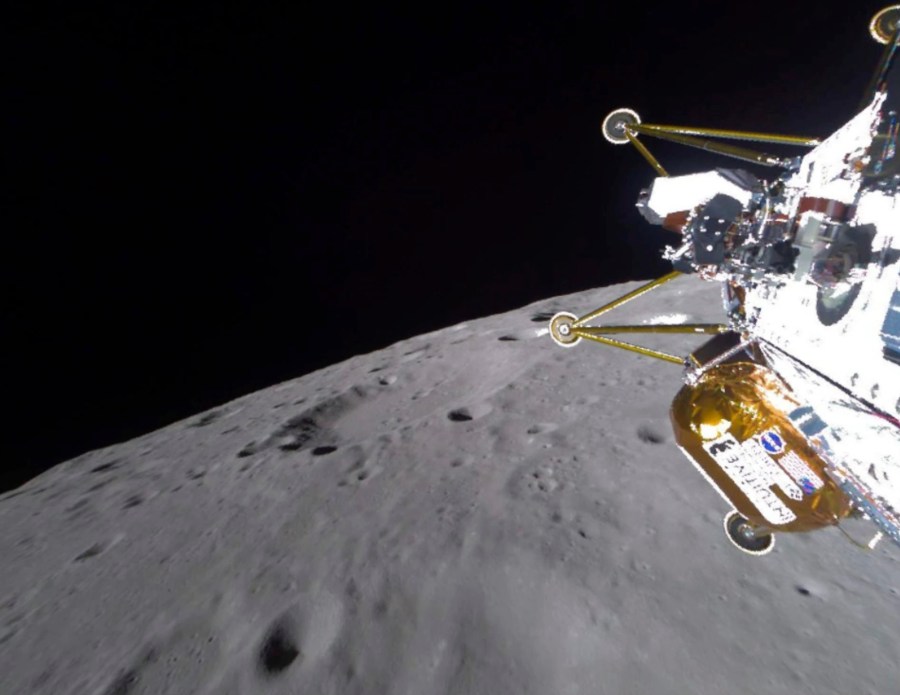Trump wants to beat China to the moon. Will he still be president when we get there?

Those who don’t have a passion for America’s human spaceflight program — and all should, as it is the key to our future national and economic security — may not be aware of the feud between SpaceX CEO Elon Musk and acting NASA administrator and current Secretary of Transportation Sean Duffy.
In full disclosure, I know both Duffy and his wife, Rachel Campos-Duffy. I was interviewed by both on their podcast regarding my book “The 56,” and have sat down with Sean Duffy over coffee as well. I believe him not only to be an honorable man but also one who is fully dedicated to President Trump’s commitment to return American astronauts to the moon before Chinese astronauts get there.
Beyond that, I believe Elon Musk to be a once-in-a-century mind who has the capability to lift the U.S. and humanity to unimagined and massively beneficial heights. No matter if anyone in the U.S. government cares to admit it or not, SpaceX is the U.S. manned space program; Musk has earned the right to sit at the head of the table when it comes to our space program.
Any squabbling between Musk and Duffy could prove detrimental to the goals outlined by Trump.
NASA has been a beleaguered agency for decades. Since its “glory days” of the 1960s, when it truly did pull off the “impossible” by landing Americans on the moon, NASA has encountered — and been marginalized by — two major issues.
The first is that NASA has been taken apart and “reimagined” each time an administration goes from Republican to Democrat or vice versa. After Joe Biden became president, as a recent example, he and his team transformed NASA into a far-left “woke” agency more interested in climate change and the proper use of pronouns. When Trump reclaimed the White House in 2024, he rightfully began to shift the agency back toward the mission first articulated by John F. Kennedy back in 1962.
Said the young president during his iconic remarks at Rice University: “The eyes of the world now look into space, to the Moon and to the planets beyond, and we have vowed that we shall not see it governed by a hostile flag of conquest, but by a banner of freedom and peace. … Whether it will become a force for good or ill depends on man, and only if the United States occupies a position of preeminence.”
Well, come 2025, the U.S. does not occupy “a position of preeminence” — China does. Trump, Musk, Duffy and Jared Isaacman, Trump’s onetime and perhaps-once-again nominee for NASA administrator, can reverse that increasingly threatening reality. But to do so, everyone must be rowing in the same direction.
That brings us to the second major issue that has continually sidelined NASA. Most politicians, from both sides of the aisle, don’t see it as a tangible vote-getter. For far too many, the welfare of NASA is just some futuristic gobbledygook. Hence, they ignore it.
Except that “gobbledygook” is the very foundation for protecting — and enhancing — our national and economic security for decades, perhaps centuries, to come. And while self-centered U.S. politicians may not see it that way, China assuredly does.
As I write this, the Chinese military-run space program has rovers on the moon mapping its south pole in anticipation of its taikonauts not only landing on the surface but claiming as its own the Helium-3 that litters the lunar surface.
What is Helium-3? It is an isotope that could potentially provide an almost limitless supply of safe, clean, green energy. Some experts estimate the moon’s surface holds more than 1 million metric tons of Helium-3. Just 25 metric tons could fuel America’s energy needs for a year.
Trump has made it mission critical for the U.S. to return to the moon, but the architecture we are employing looks like a “Rube Goldberg” contraption on steroids.
Back in the “glory” moon days of Apollo, NASA used the Saturn-V to deliver the lunar module to the surface of the moon — one rocket and done. Now, NASA has moved to a commercial plan for an Artemis III landing that relies on a separate Space Launch System rocket, built by non-SpaceX contractors, to carry a spacecraft designated Orion to get the astronauts to lunar orbit. From there, the astronauts will transfer to SpaceX’s Starship for the moon landing.
One major problem? Some engineers at NASA’s Johnson Space Center estimate that a single moon landing could require SpaceX to launch upward of 40 tankers to fuel the Starship. This is an untested architecture fraught with high risk, and it has massive delay and cost overruns written all over it.
Trump is a visionary and sees the critical need for the U.S. to be preeminent in space in the best interests of our national and economic security. Team America Moon Landing needs to be completely honest with the president and tell him if they truly believe we can safely land astronauts on the lunar surface before his term expires.
Douglas MacKinnon is a former White House and Pentagon official.